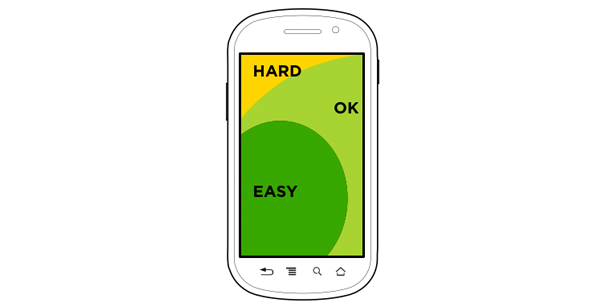When we design we generally do so in two dimensions — length and width. They are the physical constraints of what our technology is currently capable of. Our dimensional restraints are then realised on the devices used to experience our design.
Beyond the two dimensional screen exists the third dimension (and many other theorised dimensions) — the physical space in which our designs exist beyond the canvas. Here, all sorts of physical parameters affect how a person uses our design.
Consider the user’s physical space around them — perhaps they are lying on their side on the sofa or in bed and holding a mobile device with one hand. Can the design be enjoyed when a user’s is physically restricted from using two hands? Luke Wroblewski further elaborates on this idea in his Testing One Thumb, One Eyeball article detailing the test procedure for Polar.
If people can get things done in time sensitive, limited dexterity situations, they’ll be even more efficient when we have their full attention and two-hands focused on our designs.
In a separate article Luke details the reach of one thumb with the diagram below to show the considerations for positioning navigation. This is relevant to anything you want people to reach easily, for example if you had a single purpose web app, you might want to position the primary action in the safe zone just like Instagram does with their primary action (take picture).

Beyond the canvas take into account where the thumb might hover while the device is in use. Sometimes people rest their thumb along the ridge of the hardware while others hover it over a portion of the screen poised to press something. This emphasises the importance of testing with real devices. Real hardware considers space in three dimensions whereas on-screen emulators put themselves into the two dimensional canvas free from physical distractions — it’s not really representative of the physical world we live in beyond the canvas.